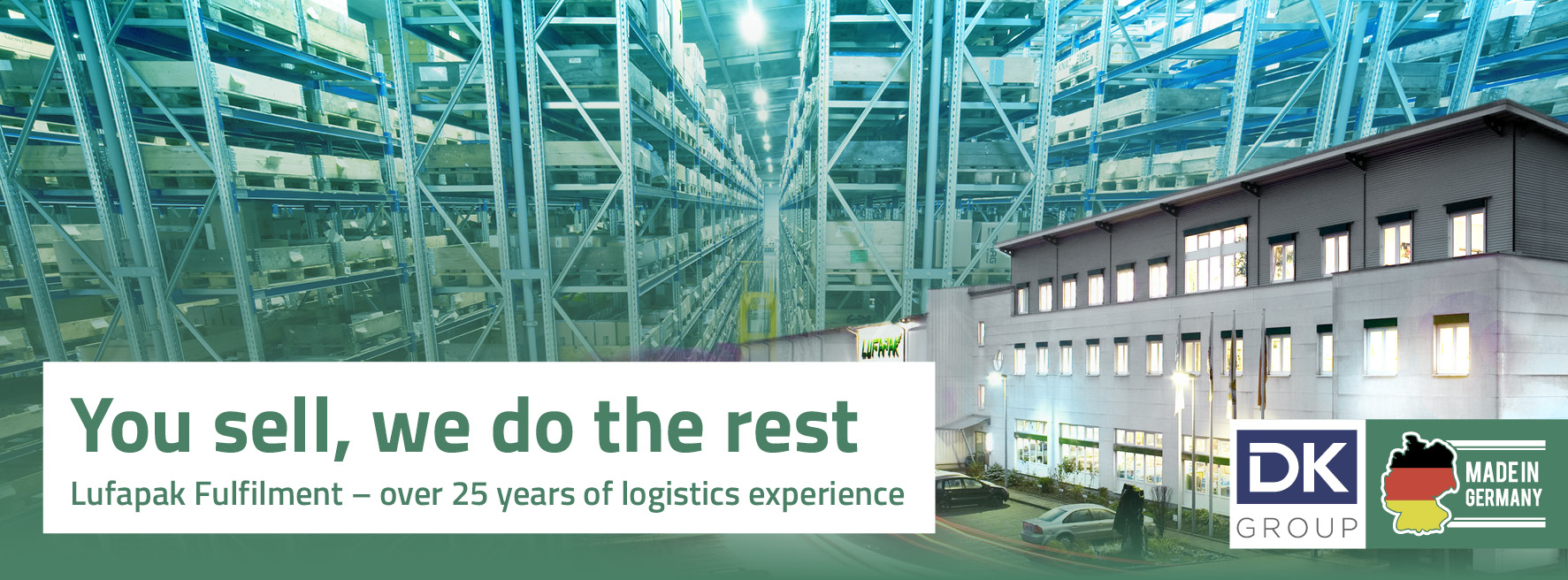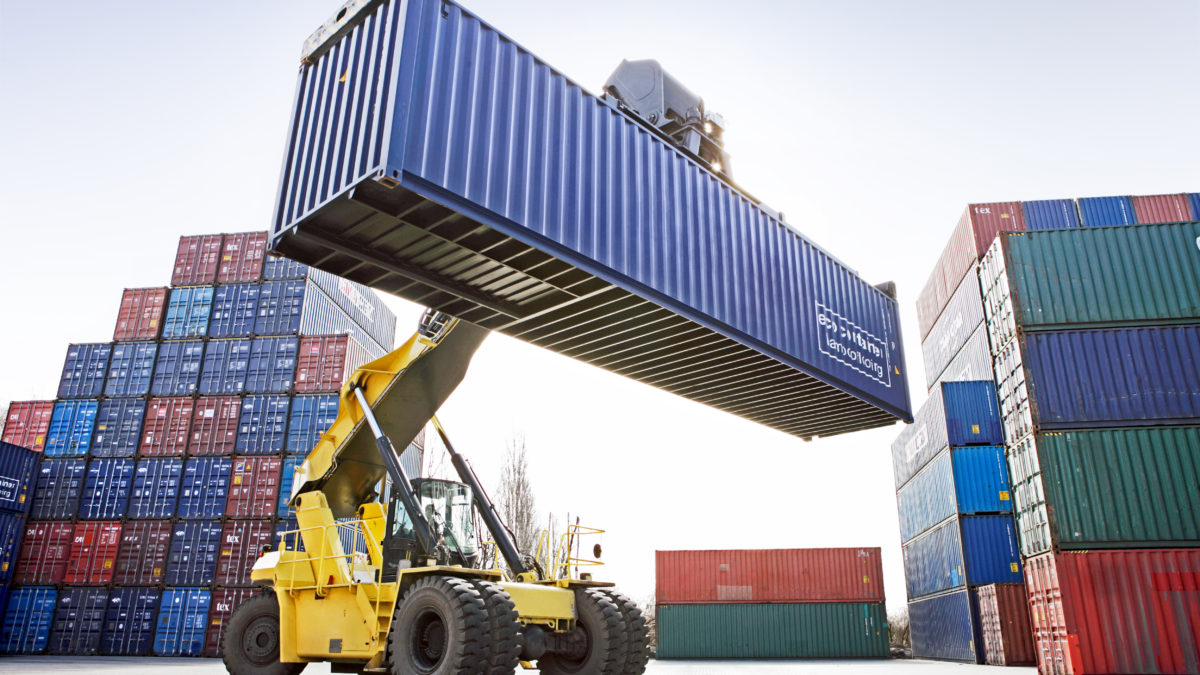sales@lufapak.de +49 2631/384-0 Contactform
Introduction
Transshipment, also known as transhipment, is an essential part of the global supply chain. It refers to the process by which goods or containers are shipped to an intermediate location and then forwarded to their final destination. This may involve transferring cargo from one mode of transportation to another, such as from a ship to a truck or from an airplane to a train.
The importance of transshipment in logistics cannot be overstated. It enables a more efficient use of transport resources by helping to optimize the flow of goods and reduce transport costs. Furthermore, transshipment plays a crucial role in overcoming challenges such as managing complex supply chains, ensuring flexibility and responding to unpredictable events.
In this article, we will take a closer look at the concept of transshipment, discuss its benefits and challenges and take a look at the latest trends and innovations in this area.
What is transshipment?
Transshipment is the process of transferring goods or cargo from one mode of transportation to another or from one container to another. This usually takes place at an intermediate hub or transshipment point, such as a port, airport or freight station. The primary purpose of transshipment is to improve supply chain efficiency and reduce costs.
The transshipment process begins with the arrival of the cargo at the transshipment point. The cargo is then unloaded and transferred to the next means of transportation that will take it to its final destination. This can happen several times during the transportation of a cargo from its origin to its destination.

Examples of transshipment in various industries
- Sea freight: Transshipment is a common practice in ocean freight. For example, cargo may be loaded onto a ship in China, which takes it to a major port such as the port of Singapore. There, the cargo is then transferred to another ship that takes it to its final destination.
- Air freight: In air freight, transshipment can be used to improve the efficiency of air freight networks. For example, a parcel can be flown from New York to Frankfurt and then transferred to another aircraft that takes it to London.
- Retail: Transshipment is also used in the retail sector to efficiently manage stock levels. Retailers can transport goods from one store to another to respond to local fluctuations in demand and optimize inventory.
Transshipment is an essential element in logistics management, helping to improve efficiency, reduce costs and ensure the smooth delivery of goods to their final destinations.
The role of transshipment in the global supply chain
Transshipment is an integral part of the global supply chain and plays an essential role in optimizing the flow of goods between the various players. It not only enables efficient use of transportation resources, but also faster and more cost-effective delivery of goods to their final destinations.
The importance of transshipment for supply chain efficiency lies in its ability to optimize the flow of goods while minimizing transportation costs. By transshipping goods at strategic locations, companies can reduce the number of means of transportation required and thus save costs. In addition, transshipment enables better utilization of the means of transport by minimizing idle times and making optimum use of capacities.
Transshipment in the global trade landscape
In the global trade landscape, transshipment is even more important. As most international trade goods are transported by sea, transshipment plays a crucial role in connecting markets and creating efficient trade routes.
Major container ports such as Singapore or Rotterdam act as important transshipment points where goods are transferred to other ships to take them to their final destinations. These ports play a crucial role in maintaining the global flow of trade and help to make global trade efficient and cost-effective.
Advantages of transshipment
Transshipment offers a number of advantages that help to improve the efficiency and flexibility of the supply chain.
- Cost savings by bundling shipments: By transshipping goods at strategic locations, companies can use their transportation resources more efficiently. Instead of sending many small shipments separately, they can be bundled and transported in larger quantities. This reduces the number of means of transportation required and leads to considerable cost savings.
- Improved transport efficiency: Transshipment enables better utilization of the means of transport. By minimizing idle times and making optimum use of capacities, goods can reach their destination faster and more efficiently.
- Increased flexibility in the supply chain: Transshipment also offers more flexibility in the supply chain. It enables companies to react quickly to changes in demand or unforeseen events. For example, goods can be quickly transported from one warehouse to another as needed to respond to local fluctuations in demand.
The challenges of transshipment
Although transshipment offers many benefits to the supply chain, it also presents a number of challenges. Here are some of the most common problems:
- Delays, damage or loss of goods: Every time goods are transshipped, there is a risk of delay, damage or loss. This can happen due to human error, technical problems or unforeseen events such as bad weather. Companies must therefore implement robust processes and systems to minimize these risks.
- Complexity of planning and coordination: The planning and coordination of shipments can be very complex, especially in large and global supply chains. Companies need to carefully plan and coordinate the transportation of goods between different locations and across different modes of transport. This requires accurate tracking and monitoring of goods and effective communication between all parties involved.
- Regulatory hurdles and customs issues: International transshipments can also involve regulatory hurdles and customs issues. Each country has its own import and export regulations, and goods may be subject to controls when crossing borders. Companies need to understand and comply with these requirements to avoid delays and additional costs.
Technological innovations in transshipment
With the ongoing digitalization of the supply chain, modern technologies such as the Internet of Things (IoT), artificial intelligence (AI) and blockchain are increasingly being used in transshipment. These technologies can help to increase efficiency, reduce costs and increase the flexibility of the supply chain.
Use of modern technologies
Internet of Things (IoT): IoT devices can be used to monitor and track goods to ensure they arrive at their destination safely and on time. They can also be used to provide real-time information on the condition of goods, such as temperature, humidity and vibration.
Artificial intelligence (AI): AI can be used to optimize the planning and coordination of shipments. By analyzing large amounts of data, AI can make precise predictions about demand and supply, helping to make more efficient use of transport resources.
Blockchain: Blockchain technology can be used to increase security and transparency in the supply chain. It makes it possible to track and verify every transaction or movement of goods in the supply chain, helping to prevent fraud and tampering.
Future trends in transshipment
The world of transshipment is constantly evolving, driven by technological advances and changing business conditions. Here are some of the trends that could play an important role in the coming years:
- Advancing digitalization: digitalization is already having a significant impact on transshipment, and this trend is expected to continue. Companies are increasingly relying on digital platforms and technologies to make their supply chains more efficient and transparent. These include real-time tracking systems, AI-supported planning and optimization tools and blockchain-based solutions for secure and reliable documentation.
- Sustainability and climate-friendliness: In view of the growing importance of climate protection, more and more companies are striving to make their supply chains more sustainable and climate-friendly. This could be done, for example, by using low-emission means of transport, optimizing route planning to reduce unnecessary journeys or implementing circular economy concepts.
- More regional supply chains: Another trend is “reshoring”, i.e. the relocation of production activities back to the companies’ home countries or regions. This can lead to changes in the structures and requirements of transshipment, as the distances between production and consumption locations may become shorter.
How companies can prepare for these trends
To prepare for these trends, companies should first carefully analyze and evaluate their existing processes and systems in transshipment. Based on this, they can then decide which technologies and approaches are best suited to improve their efficiency, sustainability and flexibility.
Furthermore, it is important that companies take a long-term perspective and build strategic partnerships with other players in the supply chain. In this way, they can jointly drive innovation and better adapt to changing conditions.
Conclusion
The world of transshipment is facing an exciting future, characterized by technological innovation and changing business conditions. The further digitalization of supply chains through the use of technologies such as IoT, AI and blockchain is expected to lead to greater efficiency and transparency.
Sustainability is also becoming increasingly important in logistics. Companies are increasingly striving to make their supply chains more climate-friendly and sustainable, for example by using low-emission means of transport or optimizing route planning.
In conclusion, preparing for future trends in transportation requires both technological know-how and strategic thinking. There is still plenty of room for further research and innovation in this area, and it will be exciting to see how the industry develops in the coming years.
Contact us now and get advice


